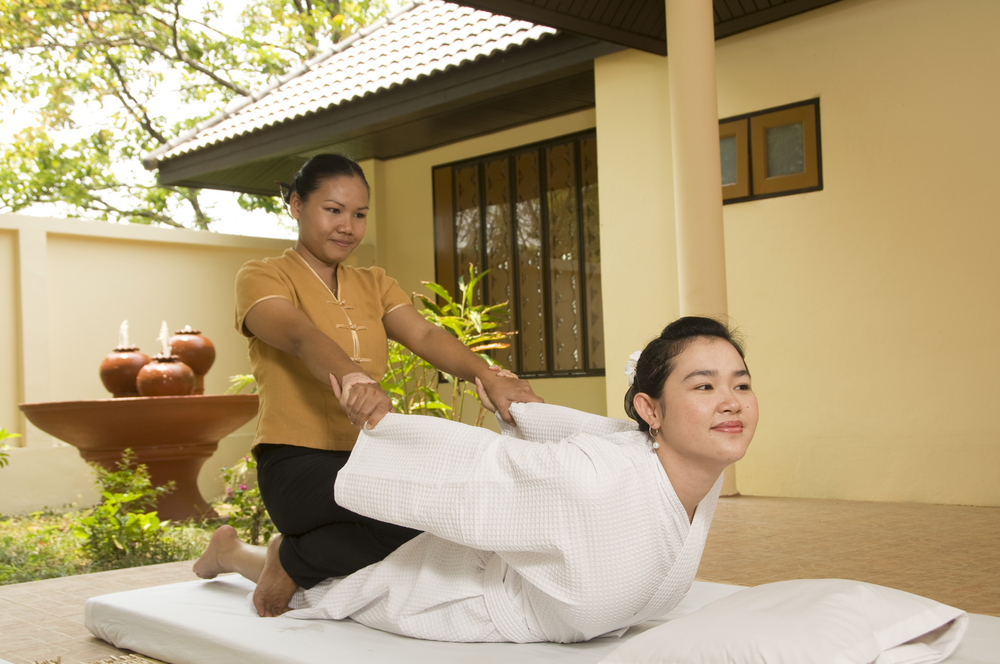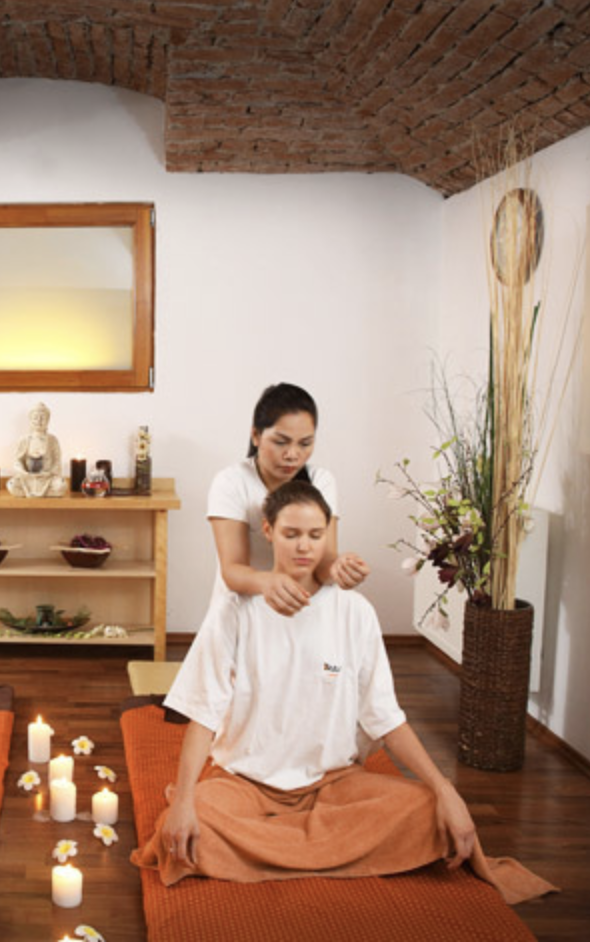
Massage provides many benefits. In addition to simply loosening tight muscles, it can help calm the nervous system, improves range of motion, correct postural imbalances, reduce stress, increases self-awareness, improve blood flow, speed healing time, improve the appearance of scars, and much more.
But with so many different styles of massage now available, this field can be quite bewildering for people seeking effective treatment from qualified practitioners. Swedish, Thai, Shiatsu, Craniosacral, Myofascial Release, Trigger Point…the list of massage techniques is quite long, and it can be difficult to separate the legitimate techniques from the marketing buzzwords.
How can you help interested patients navigate the infinite world of massage to find the modalities and practitioners right for them?
In this “Field Guide” series, I’ll explore several common–and a few uncommon–massage modalities, providing insight into the modalities themselves, the pros and cons of each style, what patients can expect on a first visit, how to find qualified practitioners, and how to prepare for sessions.
As with any other practitioner type, finding the right Licensed Massage Therapist (LMT) requires a bit of research and possibly some trial and error. Not all therapists are created equal, and not every LMT-patient relationship is meant to be. Because massage involves direct, prolonged physical contact, it is vital that clients and practitioners feel a mutual sense of comfort and compatibility.
An Ancient Practice
Thai Yoga Massage is a yoga-based massage practice originating in Thailand thousands of years ago. In the Thai language, it is known as nuat phaen thai (‘Thai-style massage’) or nuat phaen boran (‘ancient-style massage’).
The techniques that comprise modern Thai massage are attributed to Chiwaka Komaraphat (also spelled Jivaka Komarabhacca), an early Buddhist sage and healer who lived in what’s now known as the city of Rajgir, India. Known in his time as “the Medicine King,” Chiwaka lived roughly 2,500 years ago, and some Buddhist scriptures state that he actually treated the Buddha, Siddhartha Gautama.
Thai massage therapy is administered on a mat on the floor, and unlike many other modern forms of massage, in Thai massage the patient is fully clothed. It incorporates energy work, acupressure, stretching, compression, and movements focused on increasing joint range of motion.
Generally speaking, it is a fairly intense massage style. And unlike many other massage styles which primarily involve rubbing the muscles, Thai yoga massage is focused more on compressing, pulling, stretching and rocking the muscles. It also differs from many European and American forms of massage in that practitioners do not typically apply oils or lotions.
Nancy Griffith, LMT, a massage therapist practicing at Hands With Heart in Fairbanks, AK, sums up her experience with this modality: “I really enjoy it because it’s kind of like putting your patient in some yoga poses and assisting them at the same time to get deeper into that pose.”
Thai massage utilizes the energy channels in the body, also called meridians, or sen (pronounced “sun”). The practitioner starts by opening these channels using acupressure, and techniques such as “thumb chasing thumb”—a specific method of applying strong downward thumb pressure, with one thumb leading and the other following, along specific sen lines.

The practitioner will also take the limbs through their range of motion (ROM) to feel for “stuck” energy, which feels like resistance when taking the joint through a full ROM. Whenever possible, the therapist will compare the right and left sides, to find the patient’s baseline, and to bring the affected joints back into balance.
Indications & Contraindications
This massage modality is suited for those who are robust, healthy, and athletic. It is also appropriate for people who desire to increase range of motion following an injury, surgery, or overuse.
Since patients remain fully clothed, Thai massage is also a good option for people who are uncomfortable with the direct skin-on-skin touch of Swedish or traditional massage. Though the practitioner will obviously be touching the patient, so as to move the limbs and put the patient into yoga stretches, the presence of the clothing barrier allows most touch-averse people to feel safe.
This style of massage is not “relaxing” in the way of a typical Swedish massage. There is no oil, no sheets or blankets, and the practitioner and patient will often chat and communicate through the session. Breath coaching is also a central aspect of Thai yoga massage. The exhalation helps muscles and joints relax fully and deepen the stretch. Patients typically leave a session feel energized and invigorated, not “blissed out.”
There are many contraindications for Thai yoga massage. Patients with limited mobility, who struggle getting down onto and up off the floor will find this modality rather challenging.
Pregnant people are not good candidates for this style, because acupressure is an essential aspect of it, and acupressure is generally contraindicated during pregnancy. Certain acupressure points are known to be “cleansing” or “purging,” and that is the last thing someone needs during pregnancy!
Patients with chronic health conditions such as diabetes, COPD, and high blood pressure should not receive a full session of Thai yoga massage. Likewise, it’s not an appropriate style for people with larger body types or those who are extremely restricted in their ROM.
That said, it is possible for a practitioner to incorporate certain movements and aspects of Thai yoga massage into a standard table massage session, so even those that may not be able to sustain an entire session of Thai massage can benefit from some of these techniques.
Intake & Expectations
When working with someone new, Nancy Griffith says she initially takes time to hear the patient’s preconceived notions and expectation of what massage is in general, and what they believe Thai massage to be.

She then explains that Thai massage is compression-based, and quite different from the oil-based stroking and kneading a lot of people are used to. That’s very important for people to understand, so that they go into the sessions with the right expectations.
Griffith then describes the rhythm and energy that is unique to Thai massage. She won’t push someone into pain, past what he or she can tolerate. “I will assist you in achieving your maximum,” she explains.
She advises patients to wear light, loose clothing that can sustain movement. Heavy fabrics like denim jeans and other restrictive items will block the practitioner from accurately assessing the ROM.
Thai yoga massage is not an “express” technique. Typical sessions run 1-3 hours for a full body treatment, depending on the specific health issue(s), the patient’s tolerance, patient’s insurance coverage (or lack thereof), and the strength of the practitioner.
Nancy says she can touch on three anatomical areas in a 60-minute session, with roughly half the session spent on the chief complaint. Her treatment plan is one full 60-minute session per body part that is in pain.
As a Certified Yoga Instructor, she gives her patients homework in the form of daily yoga stretches to optimize and sustain the results. This is an important point that applies to many other massage styles: patients often need to make lifestyle changes in order to sustain the results obtained from the treatment sessions.
Generally, once a client has found relief from pain, and increased ROM, Griffith recommends monthly maintenance sessions.
Griffith described the following case, as an example of how Thai yoga massage can positively impact someone’s wellbeing: The client was a 59-year-old female who presented with pain and reduced ROM in her left shoulder. Her overall health status was good, though she had a history of breast cancer, which had been treated by mastectomy two years previously.
Despite physical therapy, the client said she felt tight muscles restricting her ROM, and she felt fear of using her left arm too much. This avoidance of use only intensified the problem, as the muscles became tighter and tighter from lack of use.
Following two full 60-minute sessions of Thai Yoga Massage, the patient was able to regain 100% range of motion in the left shoulder. Griffith prescribed a series of shoulder- and pectoral-opening yoga stretches to be practiced daily at home, and had the patient return once a month to maintain full mobility.
Finding a Thai Massage Practitioner
Though most states require a license to practice massage therapy, there are no specific licenses for Thai Yoga Massage, nor guidelines for finding someone who specializes in this modality. There are a number of different schools and institutions teaching Thai massage, each with its own certification.
The Thai Healing Alliance International (THAI), a non-profit international organization with members in35 countries, is working on establishing basic universal standards for the study, certification, and practice of Thai massage techniques. The Alliance maintains a database of US member-practitioners, all of whom are Registered Thai
Therapists (RTT), meaning that they have completed at least 250 hours of formal hands-on training in the traditional techniques via programs that the Alliance deems to be valid.
Before referring patients for Thai massage, it’s important to research any therapists in your area who claim to be practicing Thai massage and make sure they hold not only a massage license (if massage is a licensed profession in your state), but also a certification specific to Thai Yoga Massage.
END
Stacy Collier, LMT, CPT is a licensed massage therapist and founder of Whole Body Wellness & Massage, LLC, in Northeast Anchorage, AK. Specializing in deep tissue, cupping, Gua Sha, and Swedish relaxation techniques, she always focuses on trauma-informed care. A graduate of the Alaska Institute of Oriental Medicine, Acupuncture, and Massage Therapy in Anchorage, AK, she is currently enrolled in advanced trainings to further her education. She is an accomplished Certified Personal Trainer and works with clients in both gym and medical settings. Her 15 years of experience in fitness and the medical field give her a unique position to empower people to take charge of their health and live the life they desire. A published writer, Stacy’s articles focus on health, wellness, and positivity.







